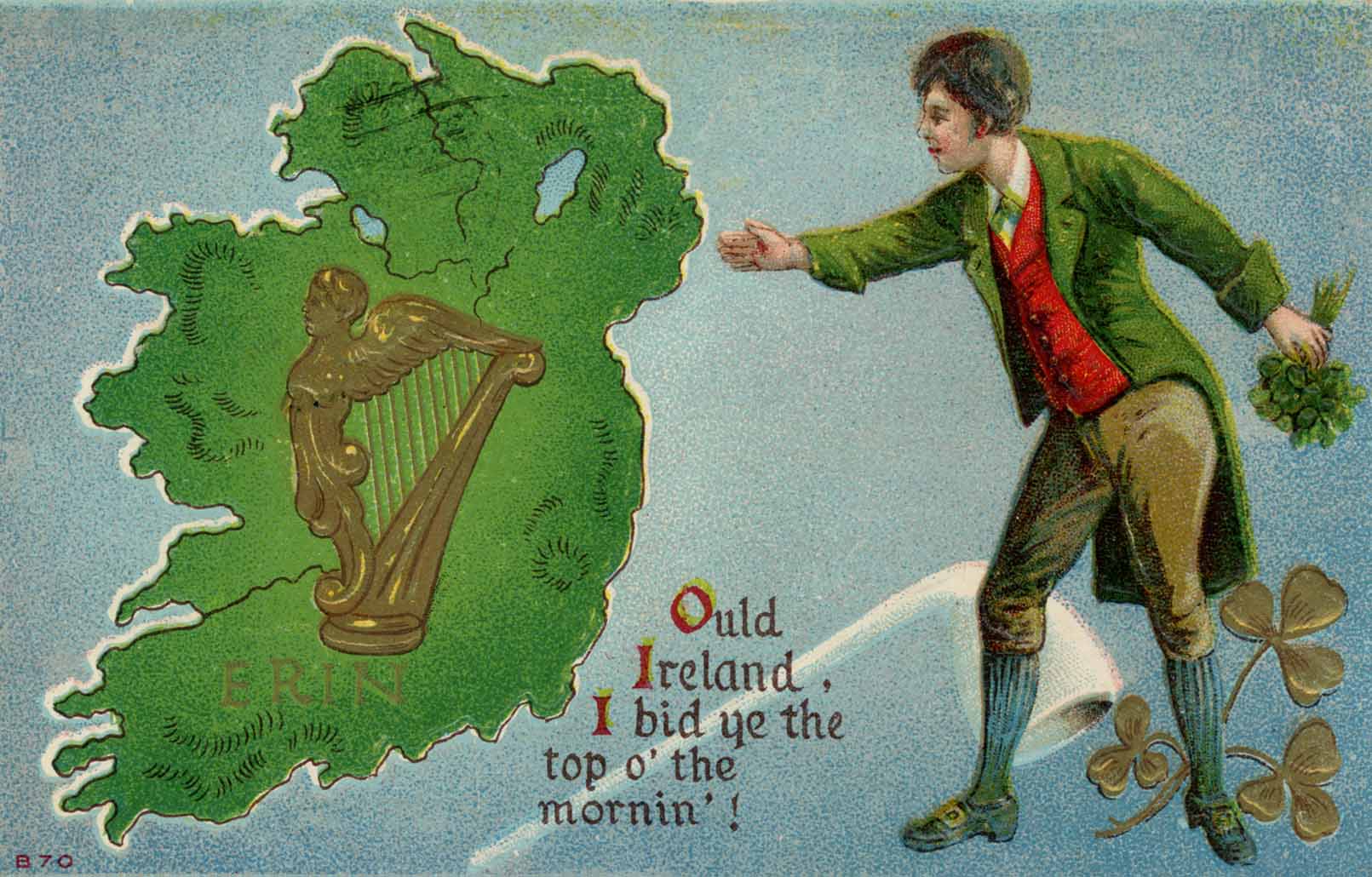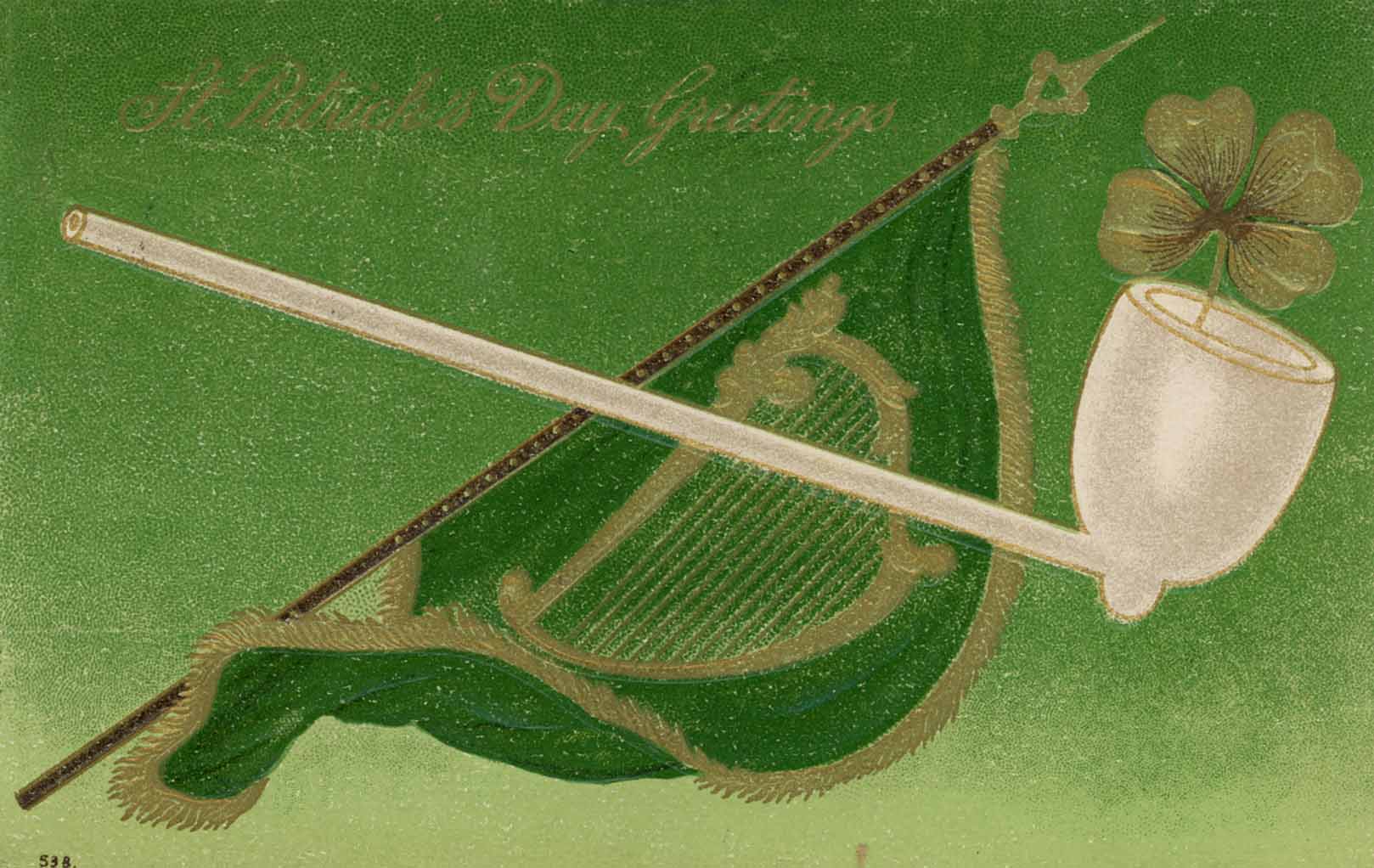Halloween Customs
All Hallow’s Eve--the night when witches and hobgoblins supposedly walk abroad. What began in the 1860s as a night of boyish pranks evolved into a county-wide celebration of parties, parades and fun.



St. Patrick’s Day post cards, 1911 and 1912.
On Saturday evening, February 27, 1836, a number of Irishmen and their descendants living in Carlisle and the surrounding area met at the Mansion House on West High Street to plan a St. Patrick’s Day celebration to honor the birth of the patron saint of Ireland. [1] A group of men were chosen to select a time and a place for the celebration, to make all the arrangements for the evening, and to advertise that information in the newspaper. The celebration was held at Aughinbaugh’s Mansion House Hotel at 7 o’clock in the evening on March 17. [2]
By the 1850’s the Carlisle Weekly Herald reported that “The only manifestation of remembrance of the day that we noticed in this quarter was the bright sprig of green displayed by our Irish friends and others.” [3] In 1869 the editor of the Carlisle Weekly Herald commented on celebrations of the past.
“St. Patrick’s Day—The 17th of March, the natal day of Ireland’s Patron Saint will come on Wednesday this year. Preparations for celebrating the day are already being made in the cities. In former years, in Carlisle, Irishmen and their descendants celebrated St. Patrick’s Day in handsome style. The “shamrock” was worn in many a hat; a supper was had; toasts drank, and the “Exile of Erin,” “Wearing O’ the Green,” “St. Patrick’s Day in the Morning,” and other favorite Irish songs were sung on the occasion. It was then a genial festive day, but for many years it has been suffered to come and go almost unnoticed.” [4]
It was no different in Shippensburg. The March 25, 1876, edition of The Shippensburg News noted that “St. Patrick’s Day passed over in this Borough without any demonstration whatever. There was not even a single instance of the wearing of the green.”
But times changed, and by 1908 items about St. Patrick’s Day parties given privately and by fraternal organizations started to appear in local newspapers. During the decade of 1910, St. Patrick’s Day celebrations were being held throughout the county by church groups, social clubs, schools, and in the homes of its residents. Florists advertised shamrocks and green carnations for sale. St. Patrick’s Day postcards were available, and some store owners decorated their windows. In 1922 the Eagles held a St. Patrick’s Day dance at the Armory in Carlisle, the Delta Theta Phi fraternity held a dance in their house on East High Street, and Cristman Bros. company of Carlisle sold “Pistachio Cream of the Shamrock Kind” as a St. Patrick’s Day special.[5]
A delightful time was had by all at the St. Patrick’s Day dinner at the Shippensburg State Teachers’ College in March 1928. The tables in the college dining room were decorated with images of castles, the Blarney Stone, and other Irish themes. A contest was held for the best dressed table. Miss Willoughby’s table decoration “consisted of a shamrock-shaped house, with favors made of potatoes to resemble small animals. At the entrance of the house stood a small potato figure of a man.” Her table was declared the winner, and she was awarded a three-layer chocolate cake “bearing a green candle.” The dinner was typically Irish and consisted of the following fare accompanied by “musical strains furnished by the College Jazz Orchestra.”
Irish Stew (Chicken)
Murphies Dressed in Green (Mashed Potatoes with Parsley)
The Wearin’ of the Green (Pickles and Olives)
Shamrock Salad (Pineapple Salad) Fairy Flakes (Cheese Wafers)
Irish Icebergs (Pistachio Ice Cream)
Good Luck Go With ‘Em (Cookies Iced with Green)
Witches’ Brew (Coffee) [6]
Today, “the United States becomes an emerald green country for a day….Revelers from coast to coast celebrate all things Irish by hoisting pints of Guinness and cheering bagpipers, step dancers and marching bands parading through city streets. These familiar annual traditions weren’t imported from Ireland…they were made in America."[7]
All Hallow’s Eve--the night when witches and hobgoblins supposedly walk abroad. What began in the 1860s as a night of boyish pranks evolved into a county-wide celebration of parties, parades and fun.
[1]Carlisle Weekly Herald, March 3, 1836.
[2] Carlisle Weekly Herald, March 17, 1836.
[3] Carlisle Weekly Herald, March 18, 1857.
[4] Carlisle Weekly Herald, March 5, 1869.
[5] The Sentinel, Carlisle, March 15, 1922.
[6] The News-Chronicle, Shippensburg, March 23, 1928.